How to Become an Esthetician in Canada
Licensing, Education & Requirements
The beauty and skincare industry in Canada is thriving. With rising demand for facial treatments, advanced skin therapies, and personal grooming services, becoming a licensed esthetician in Canada is a promising and rewarding career path. But how do you get started? What certifications are required? And what varies across different provinces?
This guide provides a province-by-province breakdown of the education, training, and licensing requirements for estheticians in Canada.

What Does an Esthetician Do in Canada?
In Canada, estheticians provide a wide range of beauty and wellness services, including:
-
Facials and skincare treatments
-
Waxing and hair removal (threading, sugaring, laser in some cases)
-
Manicures and pedicures
-
Body treatments and exfoliation
-
Makeup application
-
Eyelash extensions and brow shaping
-
Skin analysis and personalized skincare advice
Medical estheticians with advanced training may also perform procedures like microdermabrasion, chemical peels, or laser treatments, depending on provincial laws.

Do You Need a License to Be an Esthetician in Canada?
The answer depends on your province. There is no national license in Canada; instead, each province or territory governs its own licensing and training standards. Some provinces require mandatory licensing and examinations, while others allow you to work after completing a certified esthetics program.
Provincial Requirements for Estheticians in Canada
Ontario (ON)
-
Licensing: Not mandatory, but most employers require certification.
-
Training: Complete a diploma or certificate program at a Ministry-approved Private Career College or community college.
-
Common schools: Seneca College, George Brown College, Canadian Beauty College.
-
Note: Ontario is a great place to start for new estheticians due to accessible training and high demand in urban centres like Toronto.
British Columbia (BC)
-
Licensing: No provincial license required.
-
Training: Complete a diploma or apprenticeship program from a recognized esthetics school.
-
Common schools: Blanche Macdonald Centre, John Casablanca Institute.
-
Regulator: Industry Training Authority (ITA).
-
Tip: BC estheticians often pursue advanced certification in laser, IPL, and dermaplaning to stand out.
Alberta (AB)
-
Licensing: Esthetics is not a regulated trade.
-
Training: Attend a certified beauty school to obtain a diploma in esthetics or medical aesthetics.
-
Popular schools: Delmar College, MC College, EvelineCharles Academy.
-
Consideration: Alberta offers some of the most flexible options for estheticians, ideal for those entering the field later in life.
Quebec (QC)
-
Licensing: Not required, but strong emphasis on formal education.
-
Training: Must complete a DEP (Diploma of Vocational Studies) or equivalent.
-
Popular institutions: Edith Serei Academy, Inter-Dec College.
-
Language: Most programs are offered in French, though English options exist.
Nova Scotia (NS)
-
Licensing: Mandatory through the Cosmetology Association of Nova Scotia.
-
Training: At least 1,500 hours of instruction and hands-on practice.
-
Requirement: Must pass a provincial licensing exam.
-
Observation: One of the strictest provinces for esthetics licensing.
Other Provinces & Territories
-
Manitoba, Saskatchewan, New Brunswick, PEI, Newfoundland: Regulations vary; most require completion of an esthetics program at a recognized institution.
-
Yukon, NWT, Nunavut: Generally have fewer regulatory requirements, but training is still strongly recommended.
What Does Esthetician Training in Canada Include?
Most esthetician programs in Canada cover:
-
Skin anatomy and physiology
-
Infection control & sanitization
-
Facials and advanced skincare
-
Hair removal techniques
-
Nail care and design
-
Professional ethics and client care
-
Business and spa operations
Courses typically range from 600 to 1,500 hours, depending on the depth and certification level.
Career Outlook for Estheticians in Canada (2025)
According to Job Bank Canada, employment opportunities for estheticians and related workers are steady or increasing in nearly every province. The average hourly wage ranges from $18 to $28, with higher earnings in luxury spas or self-owned studios.
In 2024, over 44,000 beauty salons and spas were operating across Canada (IBISWorld), with trends showing continued growth in demand for natural skincare, anti-aging treatments, and holistic wellness services.
Commonly Searched Keywords by Canadian Estheticians
-
how to become an esthetician in Canada
-
esthetician license requirements Ontario
-
esthetics diploma vs certificate
-
esthetician salary Canada 2025
-
medical esthetician certification BC
-
best esthetician schools in Canada
-
esthetician business startup tips
Final Thoughts
Becoming an esthetician in Canada requires a combination of professional training, hands-on practice, and a passion for skincare and wellness. While licensing laws vary by province, completing a certified esthetics program and staying up-to-date with industry trends is key to building a successful beauty career.
Whether you're looking to work in a top-tier spa, launch your own skincare studio, or explore medical aesthetics, Canada's growing beauty industry has room for every kind of talent.
Ready to elevate your space? Check out our professional spa furniture and electric treatment beds designed for Canadian estheticians.




Leave a comment